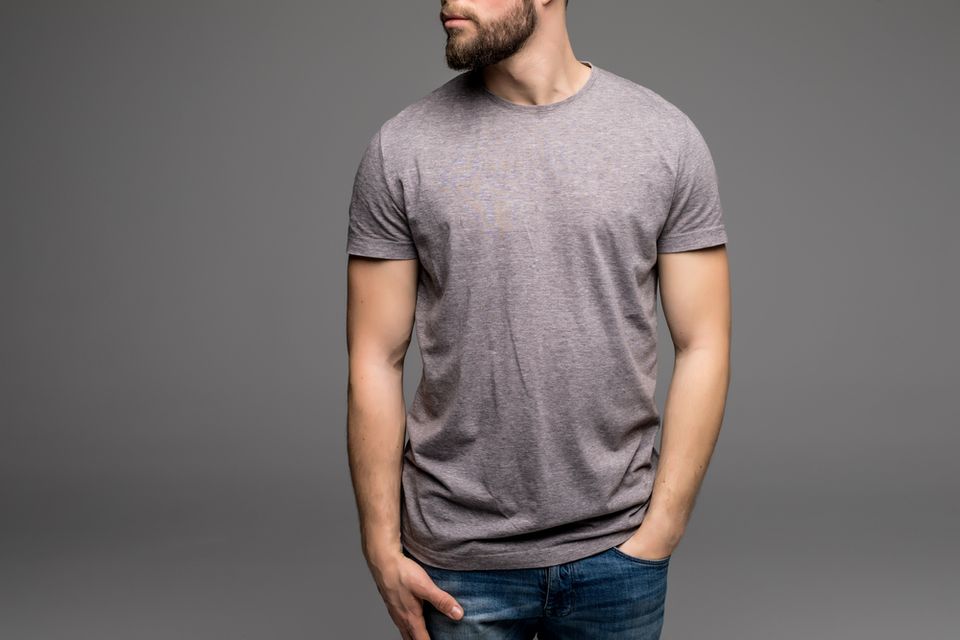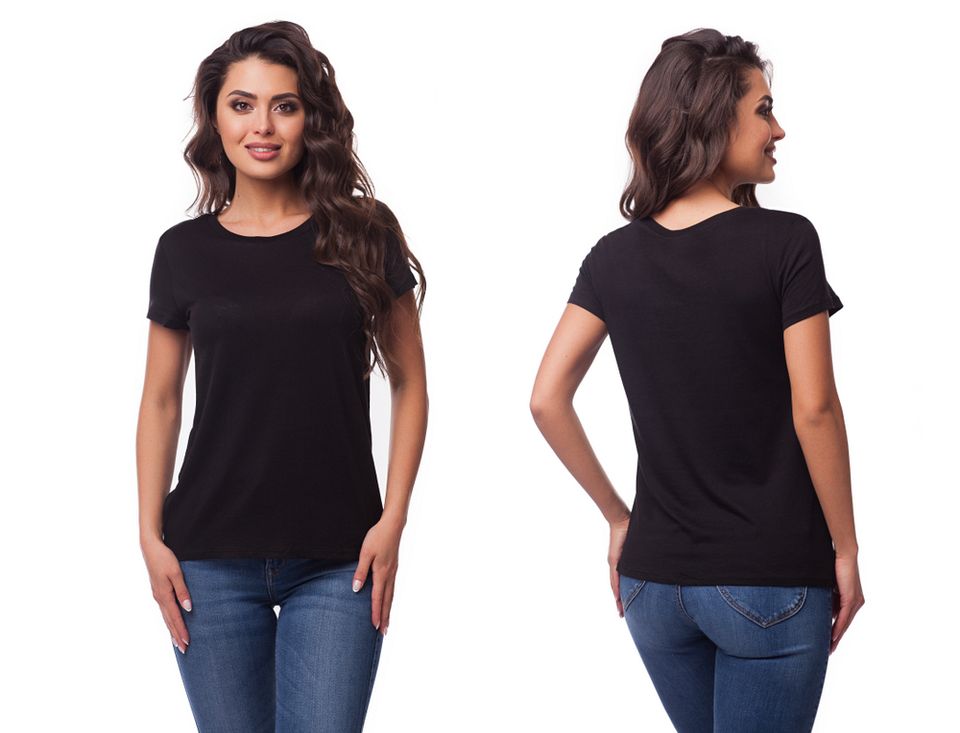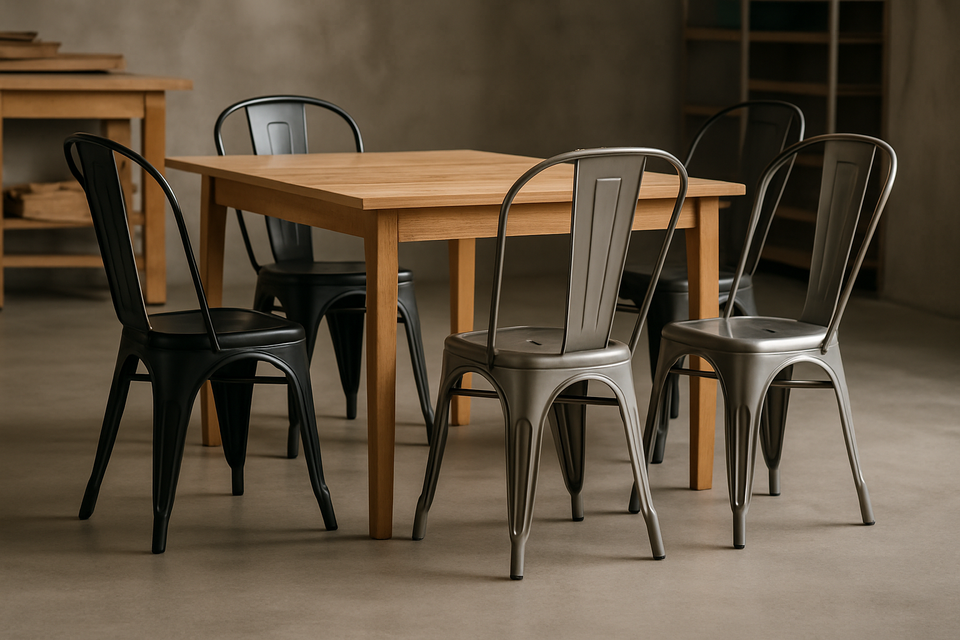Easy ideas to decorate your wardrobe
Wardrobes are suitable for your room. Also, space and measurement, color, number of drawers, shelves, and handles should be considered.
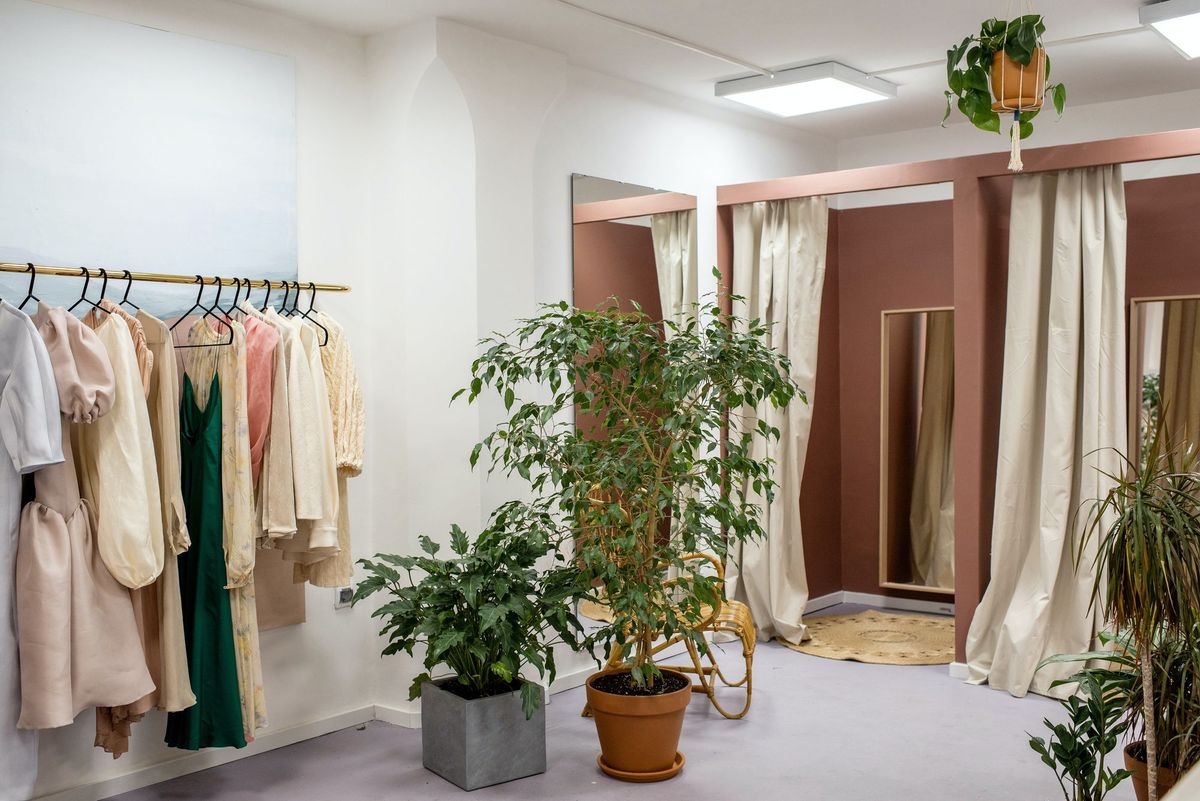
A wardrobe that is well decorated and well organized is likely to become the main attraction of the room. They are no longer considered stand-alone features but are seen as an essential part of interior design. However, designing a wardrobe is not an easy task. A wardrobe that isn't properly designed is just a waste of money. Before taking the final step, you need to consider various factors like size, style, and type of wardrobe suitable for your room. Also, space and measurement, color, number of drawers, shelves, and handles should be considered.
We are here to help you out, as we have various walk-in wardrobe designs with an attractive accent piece, a beautiful finish, and a luxurious look. You can visit our website at apkainterior.com to make your space well organized and stylish. Here are some Creative ideas to decorate your wardrobe.
Decorative laminates: In terms of cost, acrylic could be said to be one of the best laminates for your wardrobe. This provides your wardrobe with more durability as they are highly resistant to scratches and stains. They are also easy to maintain; they don't require much cleaning as they can be easily cleaned with simple water. They are also affordable without any compromise on their quality.
Wallpapers: For instant improvement in the appearance of the house, wallpapers are the best and easiest option. Using it in your wardrobe can refresh it and draw attention to it. You can also use decorative papers for this purpose. Choose the wallpaper according to the other furniture in the room, and together they will make an effortlessly beautiful space.
Curtains: Using a curtain for the wardrobe is a great idea as it can provide a custom look. You can use adhesive hooks or magnetic rods to hang them. It gives a sophisticated look, and they are very easy to replace. Curtains are available in different fabrics and patterns, so you can choose a design that can blend with the background easily.
Light Fixtures: Adding lights to the wardrobe is one of the best and simplest ways to decorate it because it can provide it with an elegant look and make it brighter. There are various kinds of lighting that you can install. Some of them are accent lighting, task lighting, and ambient lighting. They can provide your wardrobe with a very good lighting system, so you should try it.
Drawer organizers: It is important to keep your wardrobe well organized to make it look beautiful, but sometimes you feel like you need some extra space. To solve this problem, we have a great idea for you. That is drawer organization. You can use adjustable dividers that will separate the things inside the wardrobe and maximize the space. You can easily lift and move these dividers.
A wardrobe is a place where you start your morning every day. Therefore, it should be able to make your mood better. Decorating your wardrobe will surely give you a personal touch and make your room look more stylish. I hope this article has helped you to get a fabulous wardrobe.
Decorative laminates
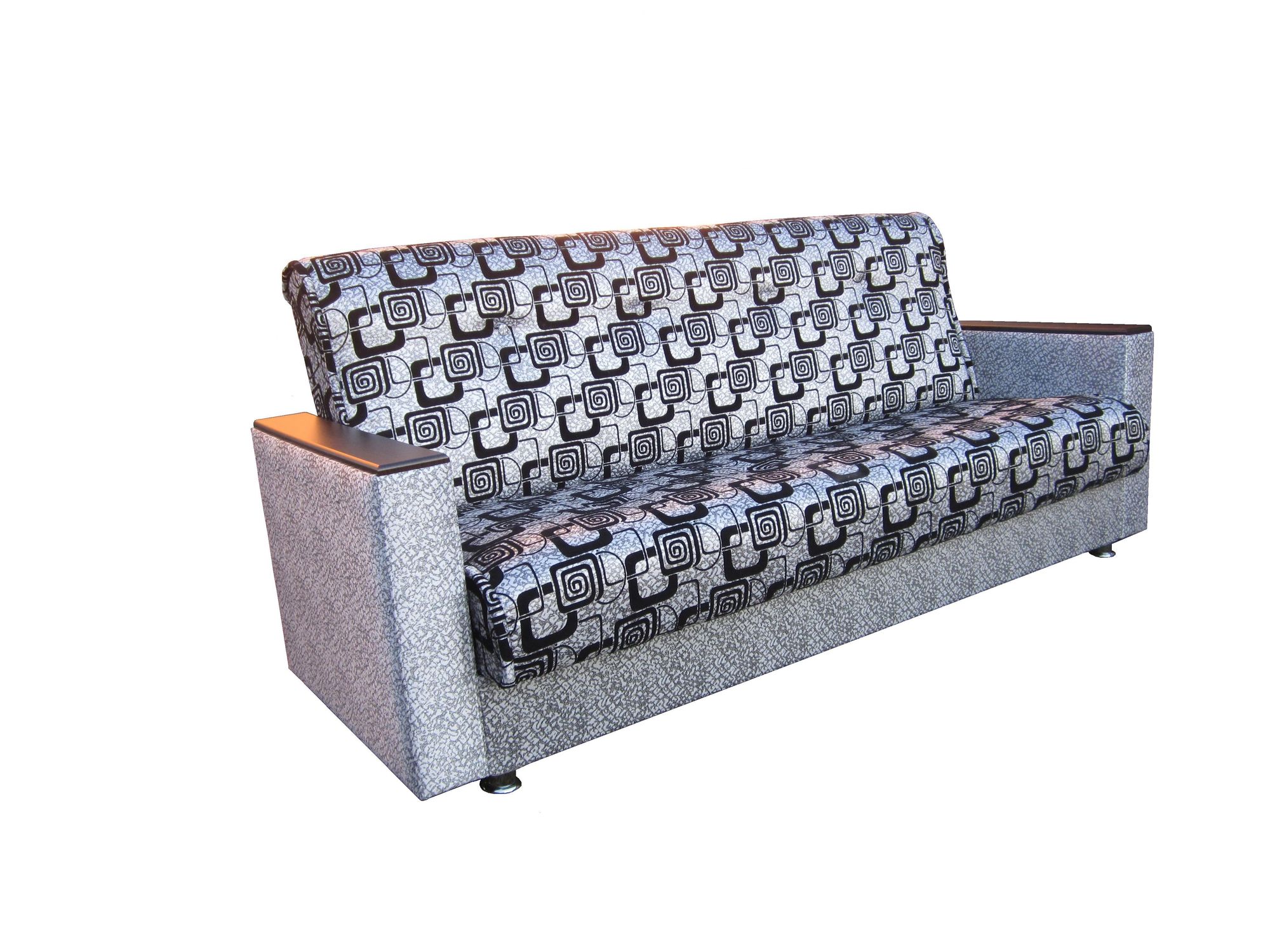
Certainly! Decorative laminates are versatile materials used in interior design and architecture to enhance the aesthetic appeal of surfaces such as furniture, walls, and countertops. These laminates are composed of layers of paper or fabric impregnated with resin and fused together under high pressure and heat. Here are more details about decorative laminates.
Overlay Layer: The top layer is often a decorative paper or fabric that carries the design, pattern, or color. This layer is responsible for the visual appeal of the laminate.
Core Layer: Below the overlay, there is a core layer that provides thickness and stability to the laminate. It is typically made of kraft paper that has been treated with resin.
Decorative Paper Layer: The decorative paper layer is saturated with melamine resin to make it durable and resistant to wear and tear.
Backer Layer: The bottom layer, also known as the backer layer, is a balancing layer that helps prevent warping. It is also impregnated with resin.
High-Pressure Laminates (HPL):
- Manufactured under high pressure and temperature, HPL is known for its durability and resistance to scratches, impact, and moisture.
- Commonly used for kitchen countertops, tabletops, and wall panels.
Low-Pressure Laminates (LPL):
- LPL is produced at lower pressure and is often used for vertical applications such as wall panels and cabinetry.
- While it may be more cost-effective, it may not have the same level of durability as HPL.
Continuous Pressure Laminate (CPL):
- CPL is a type of laminate that is continuously pressed and cured. It is commonly used for furniture surfaces, flooring, and cabinets.
- CPL often has a thinner profile compared to HPL.
Aesthetic Variety: Decorative laminates offer an extensive range of colors, patterns, and textures, allowing for creative and customized design options.
Durability: Laminates are known for their durability and resistance to scratches, stains, and moisture, making them suitable for high-traffic areas.
Easy Maintenance: They are easy to clean and maintain, requiring simple cleaning with mild detergents or cleaners.
Cost-Effective: Decorative laminates are often more cost-effective than natural materials like wood or stone, making them a popular choice for budget-conscious projects.
Versatility: Laminates can be applied to a variety of surfaces, including furniture, cabinets, countertops, and wall panels, offering versatility in design applications.
Quick Installation: The installation of decorative laminates is generally faster compared to other materials, contributing to time and cost savings.
Furniture: Laminates are commonly used for surfacing furniture, including tables, cabinets, and shelves, due to their durability and design flexibility.
Countertops and Surfaces: Kitchen and bathroom countertops often feature decorative laminates due to their resistance to water, stains, and ease of maintenance.
Wall Panels: Laminates are applied to wall panels for decorative purposes and to protect walls from wear and tear.
Cabinetry: Cabinets in kitchens, bathrooms, and other areas often incorporate laminates for both aesthetic and functional purposes.
Flooring: Some laminates are designed for use as flooring materials, providing a durable and easy-to-clean surface.
Retail and Commercial Spaces: Decorative laminates are extensively used in retail and commercial spaces for their design versatility and durability.
Quality and Thickness: Consider the quality of the laminate and its thickness, as thicker laminates often provide better durability.
Usage and Traffic: Choose laminates based on the specific usage and traffic in the area. High-pressure laminates are suitable for heavy traffic areas.
Installation: Professional installation is recommended to ensure the proper application of laminates and to achieve the desired aesthetic result.
Maintenance and Cleaning: Follow manufacturer guidelines for maintenance and cleaning to preserve the appearance and longevity of the laminates.
Decorative laminates offer a cost-effective and aesthetically pleasing solution for various interior design applications. With a wide range of colors, patterns, and textures, they provide designers and homeowners with creative freedom while offering durability and ease of maintenance.
Wallpapers
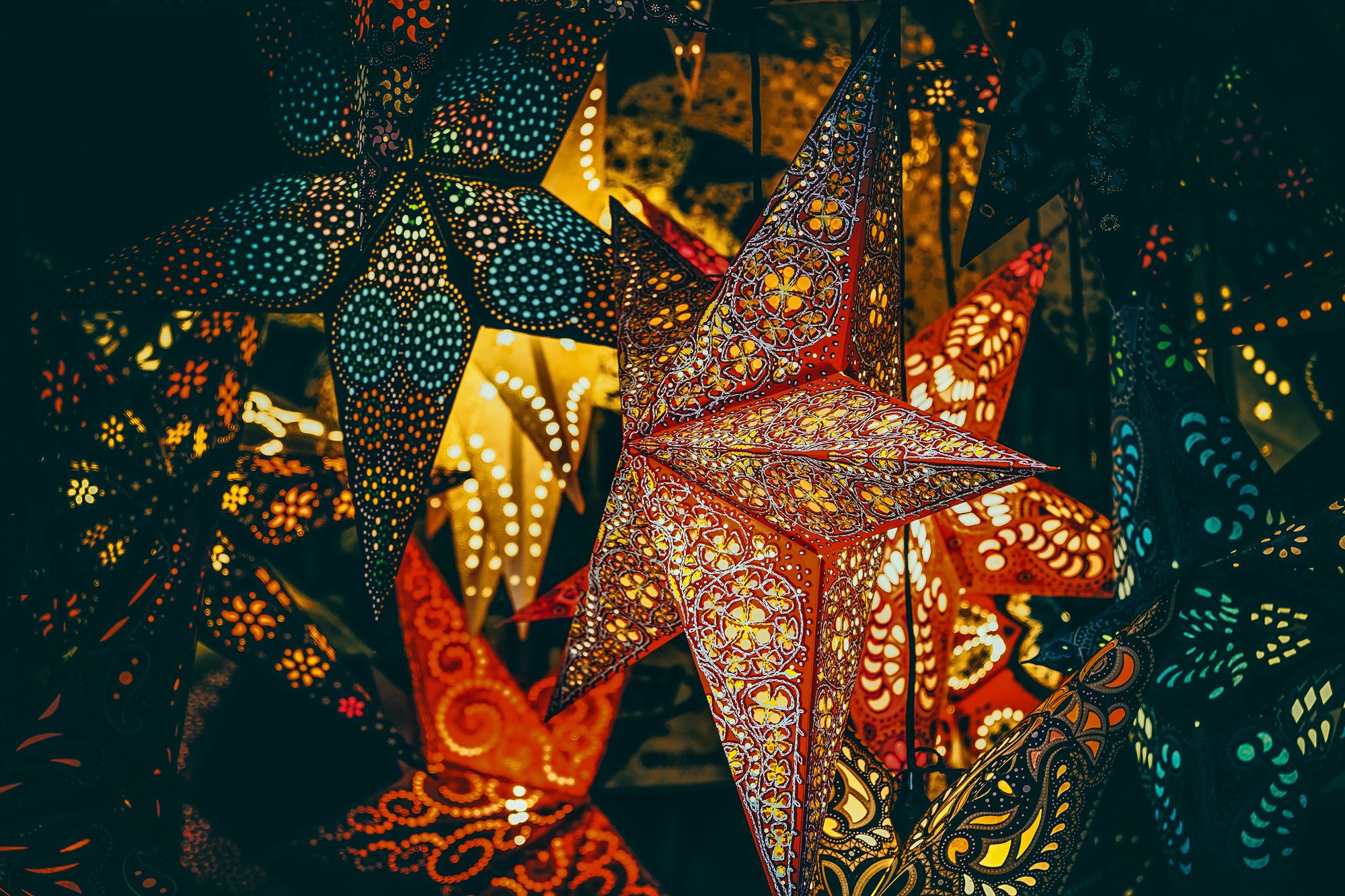
Certainly! Wallpapers are decorative materials used to cover and enhance the appearance of walls in interior spaces. They come in various patterns, colors, and textures, allowing individuals to express their style and create unique atmospheres. Here are more details about wallpapers:
Types of Wallpapers:
Paper-Based Wallpapers:
- Traditional wallpapers made from paper. They are often less durable than other types but are generally more affordable.
- They can be embossed, textured, or feature printed patterns.
Vinyl Wallpapers:
- Backed with a layer of vinyl, these wallpapers are durable, moisture-resistant, and easy to clean.
- Suitable for high-traffic areas, kitchens, and bathrooms.
Non-Woven Wallpapers:
- Made from a blend of natural and synthetic fibers, non-woven wallpapers are breathable and resistant to mold and mildew.
- They are easy to install and remove without damaging the walls.
Foil Wallpapers:
- Feature a metallic or reflective surface, adding a touch of glamour and luxury to the walls.
- Ideal for creating an accent wall or adding visual interest.
Textile Wallpapers:
- Made from fabric or textile materials, these wallpapers provide a soft and textured look.
- They can add warmth and a tactile element to a room.
Grasscloth Wallpapers:
- Made from natural materials like grass, jute, or bamboo fibers, grasscloth wallpapers have a textured and organic appearance.
- They are often used to bring a natural and earthy feel to interiors.
Mural Wallpapers:
- Large-scale wallpapers featuring detailed images or scenes. They can create a dramatic focal point in a room.
- Popular for creating feature walls or artistic statements.
Peel-and-Stick Wallpapers:
- Self-adhesive wallpapers that are easy to install and remove without damaging the walls.
- Suitable for temporary or rental spaces.
Aesthetic Variety: Wallpapers offer an extensive range of patterns, colors, and textures, allowing for customizable and creative designs.
Easy to Change: Unlike painted walls, wallpapers are relatively easy to change, providing flexibility to update the decor.
Hide Imperfections: Wallpapers can hide minor imperfections in the wall surface, creating a smooth and flawless appearance.
Texture and Depth: Textured wallpapers add depth and dimension to walls, creating visual interest and enhancing the overall design.
Durability: Certain types of wallpapers, such as vinyl and non-woven, are durable, washable, and resistant to wear and tear.
Quick Installation: Wallpapers can be installed relatively quickly, especially compared to certain painting techniques or wall treatments.
Personalization: Custom and personalized wallpaper designs are available, allowing individuals to showcase their unique style and preferences.
Surface Preparation: Proper surface preparation is essential for a smooth and long-lasting wallpaper application. Ensure walls are clean, dry, and free of imperfections.
Pattern Matching: When using patterned wallpapers, consider the pattern repeat and how it will match on adjacent walls. Proper pattern matching is crucial for a seamless look.
Room Size and Lighting: The scale of the wallpaper pattern should complement the size of the room. Dark and busy patterns may make small rooms feel cramped, while lighter patterns can open up the space.
Maintenance: Consider the maintenance requirements of the chosen wallpaper material. Some wallpapers are washable, while others may require more delicate care.
Professional Installation: For intricate patterns or specialty wallpapers, professional installation may be advisable to ensure a flawless and well-aligned finish.
Budget: Wallpapers come in a wide range of price points. Consider your budget and explore options that offer the desired aesthetic without exceeding financial constraints.
Bold Patterns and Colors: Current trends include the use of bold and oversized patterns, as well as vibrant and rich colors.
Natural and Textured Finishes: Textured wallpapers, especially those with natural materials, are gaining popularity for their organic and tactile appeal.
Metallic Accents: Wallpapers with metallic finishes or accents add a touch of glamour and sophistication to interiors.
Geometric Designs: Geometric patterns, including hexagons, triangles, and chevrons, are popular choices for creating modern and visually striking spaces.
Vintage and Retro Styles: Vintage-inspired wallpapers and retro patterns are making a comeback, offering a nostalgic and eclectic look.
Custom and Mural Designs: The availability of custom and mural wallpapers allows individuals to showcase their personal style and create unique, statement-making walls.
Wallpapers remain a versatile and popular choice for interior decor, offering an array of design possibilities. Whether used to create an accent wall, add texture, or completely transform a room, wallpapers continue to be a dynamic and creative element in interior design.
Curtains
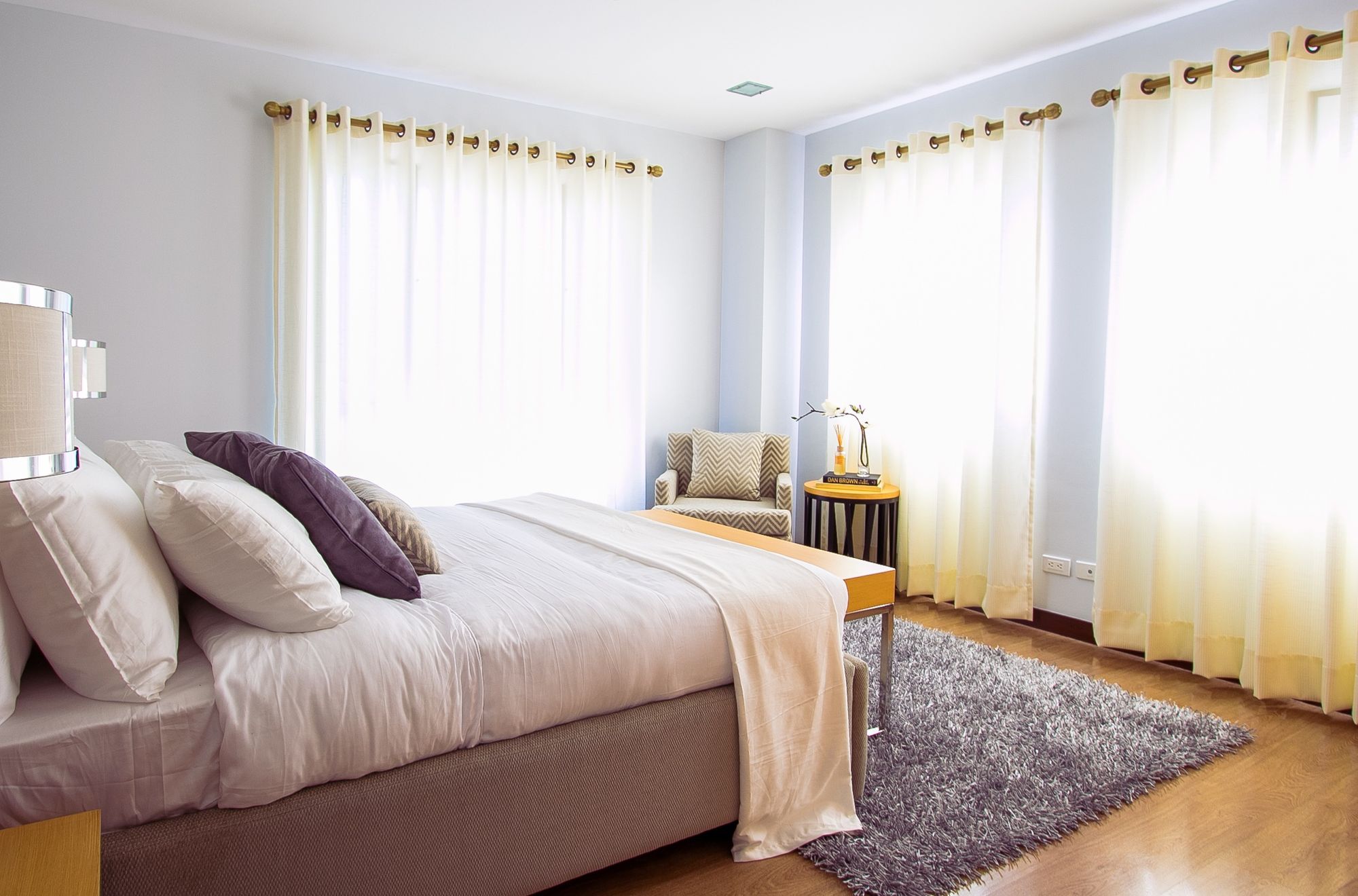
Certainly! Curtains are versatile window treatments that serve both functional and decorative purposes in interior design. They come in various styles, fabrics, and lengths, allowing individuals to enhance privacy, control light, and add aesthetic appeal to their living spaces. Here are more details about curtains:
Types of Curtains
Panel Curtains:
- These are the most common type of curtains, consisting of individual panels that hang vertically from a curtain rod.
- Panel curtains can be easily opened or closed to control light and privacy.
Sheer Curtains:
- Made from lightweight and translucent fabrics, sheer curtains allow diffused light to enter while maintaining privacy.
- Sheer curtains are often used in combination with heavier curtains for a layered look.
Blackout Curtains:
- Designed to block out light, blackout curtains are made from heavy, opaque fabrics with a special lining.
- Ideal for bedrooms, home theaters, or any space where light control is crucial.
Cafe Curtains:
- Also known as half curtains, cafe curtains cover only the lower portion of the window. They are often used in kitchens or dining areas.
- Cafe curtains provide privacy while allowing natural light to enter.
Valance Curtains:
- Valances are decorative curtain toppers that cover the upper part of the window. They add a decorative touch without fully covering the window.
- Valances are often used in combination with other types of curtains.
Swag Curtains:
- Swag curtains feature draped fabric that creates a cascading effect on the sides of the window. They add an elegant and decorative touch.
- Swag curtains are often paired with valances for a more elaborate look.
Grommet Curtains:
- Grommet curtains have metal-rimmed openings (grommets) along the top through which the curtain rod is threaded.
- They provide a modern and streamlined appearance.
Tab Top Curtains:
- Tab top curtains have fabric loops or tabs along the top that are threaded onto the curtain rod.
- They offer a casual and relaxed look.
Curtain Fabrics
Cotton: Cotton curtains are versatile, breathable, and come in various patterns and colors. They are easy to maintain and suitable for most rooms.
Linen: Linen curtains have a textured and natural appearance. They provide a relaxed and casual look but may wrinkle more easily than other fabrics.
Silk: Silk curtains add a touch of luxury and sophistication. They have a smooth and shiny texture, making them suitable for formal spaces.
Polyester: Polyester curtains are durable, wrinkle-resistant, and often more affordable. They come in a wide range of styles and colors.
Velvet: Velvet curtains provide a luxurious and opulent look. They are heavy and can enhance insulation but may be better suited for formal spaces.
Synthetic Blends: Curtains made from synthetic blends, combining materials like polyester and cotton, offer a balance of durability and affordability.
Curtain Lengths and Styles
Floor-Length Curtains: Floor-length curtains extend all the way to the floor, creating a classic and elegant look. They are suitable for formal living spaces.
Apron or Sill-Length Curtains: Apron-length curtains end at or just below the window sill. They are commonly used in kitchens and bathrooms.
Curtains that Break: Curtains that break slightly at the floor create a soft and tailored look. The fabric gently touches the floor without pooling.
Puddled Curtains: Puddled curtains have excess fabric that creates a luxurious and dramatic effect. This style is often seen in formal or traditional spaces.
Curtain Hardware
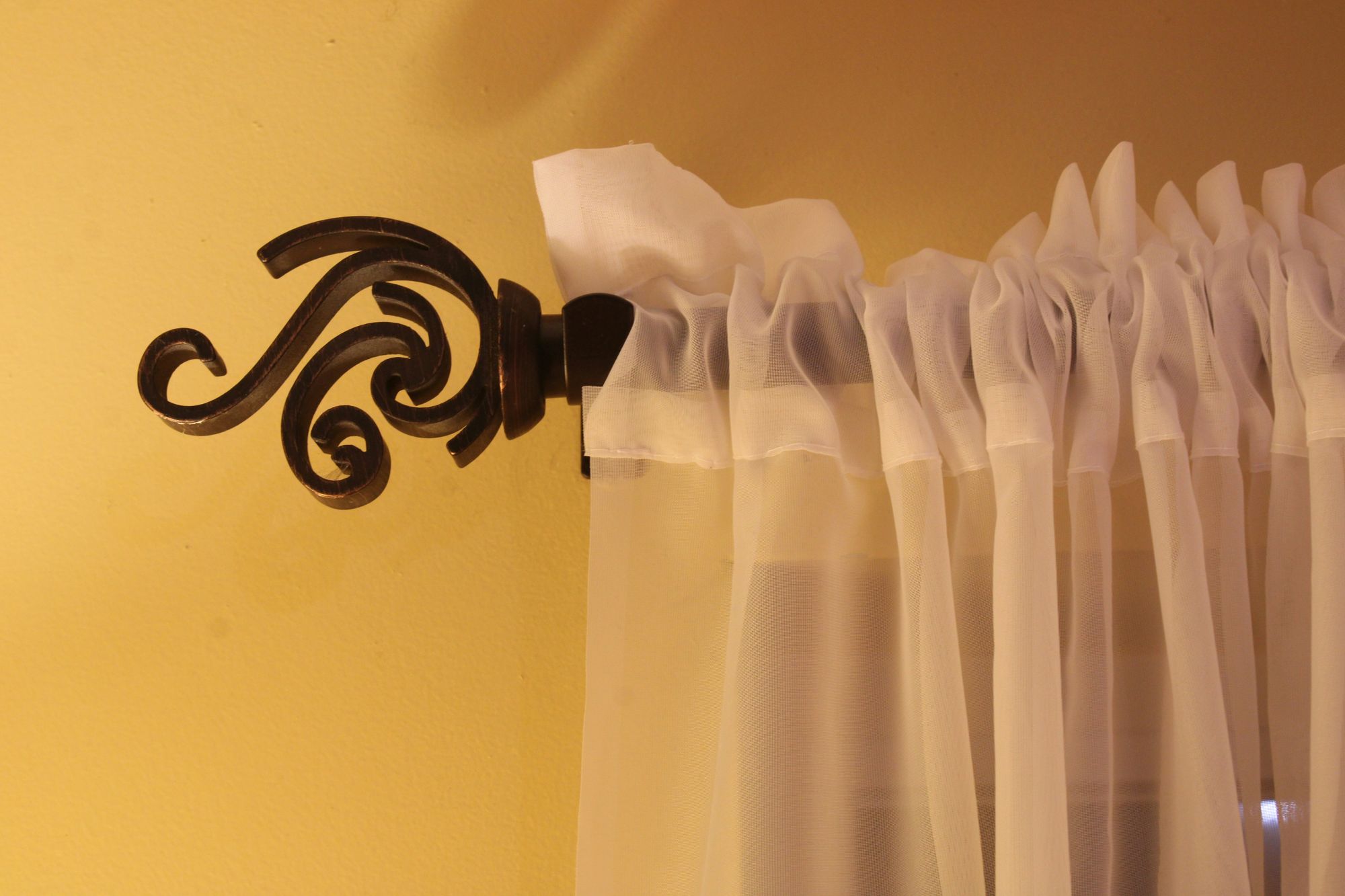
Curtain Rods:
- Curtain rods provide support for curtains and come in various materials, including metal, wood, and acrylic.
- Choose a rod that complements the style of the curtains and the overall decor.
Curtain Rings and Hooks: Rings or hooks are used to attach curtains to the rod. They come in different styles, such as clip rings or fabric hooks.
Tiebacks and Holdbacks: Tiebacks are decorative loops or bands used to hold curtains open. Holdbacks are wall-mounted hooks or accessories that serve the same purpose.
Considerations
Room Function: Consider the function of the room when choosing curtains. For example, blackout curtains may be suitable for bedrooms, while sheer curtains work well in living rooms.
Window Size: Choose curtain lengths and styles based on the size and proportions of the windows. Floor-length curtains can elongate the appearance of windows.
Light Control: Consider the amount of natural light you want in the room. Sheer curtains allow more light, while blackout curtains provide maximum light control.
Room Style: Match the style of the curtains to the overall decor of the room. Formal spaces may benefit from elegant fabrics, while casual spaces may suit more relaxed styles.
Cleaning and Maintenance: Check the cleaning instructions for the chosen fabric. Some curtains may be machine-washable, while others require professional cleaning.
Budget: Curtains come in a wide range of price points. Set a budget and explore options that offer the desired style and functionality within that budget.
Curtains play a crucial role in enhancing the visual appeal and functionality of a space. Whether chosen for their decorative patterns, light control, or privacy features, curtains contribute to the overall ambiance and style of a room.
Light Fixtures
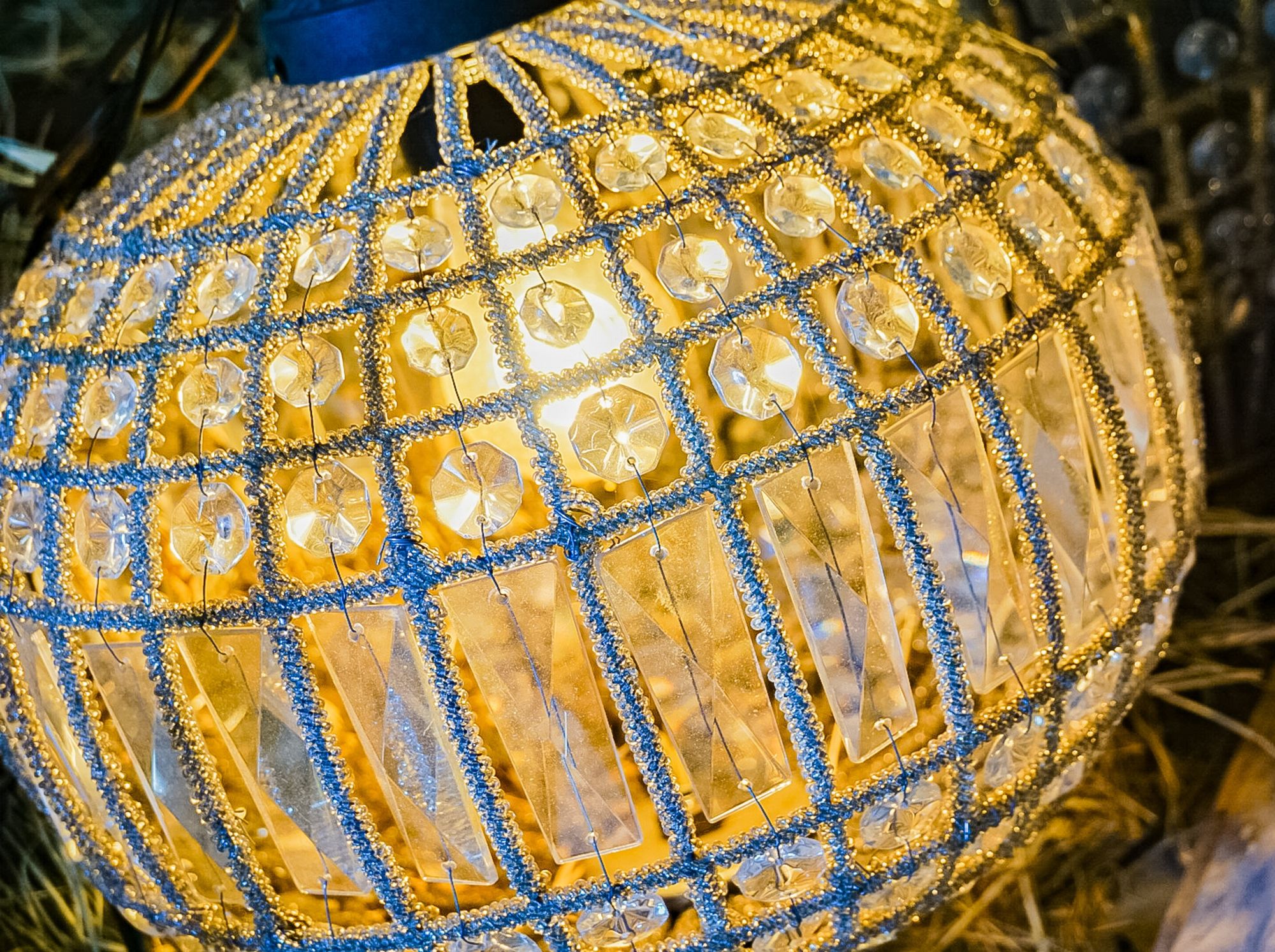
Certainly! Light fixtures, also known as luminaires or lighting fixtures, are devices that house and protect light sources while providing illumination to a space. They come in various styles, designs, and functionalities, allowing individuals to enhance both the aesthetic and functional aspects of their interior and exterior spaces. Here are more details about light fixtures:
Types of Light Fixtures
Ceiling Fixtures:
Chandeliers: Ornate and often multi-armed, chandeliers are suspended from the ceiling and provide ambient lighting in dining rooms, foyers, or large living spaces.
Pendant Lights: Single fixtures suspended from the ceiling by a rod, chain, or cord. Pendant lights are versatile and suitable for various applications, including kitchen islands and dining areas.
Flush Mounts and Semi-Flush Mounts : These fixtures sit close to the ceiling. Flush mounts are fully attached, while semi-flush mounts have a small gap between the fixture and the ceiling.
Wall-Mounted Fixtures
Sconces: Wall sconces are decorative fixtures attached to walls. They provide accent or ambient lighting and are often used in hallways, bedrooms, or living rooms.
Swing Arm Lamps: Adjustable wall-mounted lamps with a swinging arm, allowing for flexibility in directing light. Commonly used as bedside reading lights.
Recessed Lighting
Recessed Cans : Also known as can lights or downlights, recessed fixtures are installed into the ceiling, creating a seamless and minimalist appearance. They provide ambient or task lighting.
Recessed LED Panels: Flat LED panels recessed into the ceiling. They offer a sleek and modern look, providing even illumination.
Track Lighting
Track Heads: Individual lights mounted on a track that can be adjusted to direct light. Track lighting is versatile and commonly used for highlighting specific areas or artwork.
Floor Lamps: Tall standing lamps with a base that rests on the floor. Floor lamps provide ambient or task lighting and are movable, allowing for flexibility in room design.
Table Lamps: Portable lamps placed on tables or other flat surfaces. Table lamps come in various styles and are often used for task lighting or as decorative accents.
Outdoor Lighting
- Wall Lanterns:
- Wall-mounted fixtures designed for outdoor spaces, such as entryways or patios. They provide safety and security lighting.
- Post Lights:
- Mounted on posts and placed along pathways or driveways, post lights enhance visibility and add a decorative touch to outdoor areas.
- Floodlights:
- Powerful fixtures designed to illuminate large outdoor areas. They are often used for security or accent lighting.
Specialty Fixtures
- Under-Cabinet Lights:
- Mounted under cabinets to provide task lighting in kitchens or workspaces.
- Picture Lights:
- Small, focused lights designed to highlight artwork or photographs.
Light Fixture Components
Fixture Body: The main body or housing of the fixture that contains the light source and other internal components.
Light Source: The source of illumination, which can be incandescent bulbs, LED bulbs, fluorescent tubes, or other types of lighting technology.
Shade or Diffuser: The component that covers or surrounds the light source, often designed to diffuse or direct the light in a specific way. Shades come in various materials and shapes.
Mounting Hardware: The hardware used to secure the fixture to the ceiling, wall, or other surfaces. This may include brackets, screws, and anchors.
Bulb Socket: The socket that holds and connects the light bulb to the electrical wiring within the fixture.
Power Supply: The electrical components within the fixture that connect to a power source. This includes wiring, ballasts (in some fixtures), and any necessary controls.
Considerations When Choosing Light Fixtures
Functionality: Consider the intended purpose of the lighting. Different spaces may require ambient, task, or accent lighting, and fixtures should be chosen accordingly.
Style and Aesthetics: Choose fixtures that complement the overall design and style of the space. Whether contemporary, traditional, or eclectic, the right fixture can enhance the visual appeal of a room.
Lighting Levels: Consider the brightness and color temperature of the light emitted by the fixture. Different spaces may benefit from warm or cool lighting, and the brightness should be appropriate for the room's function.
Room Size and Ceiling Height: Scale the size of the fixture to the room, and consider the ceiling height when choosing hanging or pendant fixtures.
Energy Efficiency: Opt for energy-efficient lighting technologies, such as LED fixtures, to reduce energy consumption and maintenance costs.
Placement and Layout: Plan the placement and layout of fixtures to ensure even illumination throughout the space. Avoid creating dark spots or glare.
Dimming and Controls: Consider fixtures that are compatible with dimmer switches for flexibility in controlling the lighting levels. Smart lighting options may also provide additional control features.
Budget: Set a budget for lighting fixtures and explore options that meet both aesthetic and budgetary requirements.
Trends and Innovations
Smart Lighting: Integration with smart home systems allows users to control lighting remotely, set schedules, and adjust color temperatures.
Customizable Fixtures: Fixtures with modular or customizable components, allowing users to create unique and personalized lighting designs.
Natural Materials: Fixtures made from natural materials such as wood, bamboo, or stone, bringing an organic and sustainable element to lighting design.
Geometric Designs: Fixtures with geometric shapes and patterns, adding a modern and visually interesting element to interiors.
Vintage and Industrial Styles: Vintage-inspired fixtures and those with an industrial aesthetic remain popular, adding a touch of nostalgia or urban charm to spaces.
Hidden Lighting: Concealed or indirect lighting elements that create a subtle and ambient glow without the fixture being prominently visible.
Light fixtures play a crucial role in shaping the ambiance and functionality of a space. Whether providing general illumination, accentuating specific features, or adding a decorative touch, the right lighting fixtures contribute to a well-designed and inviting environment.
Drawer Organizers
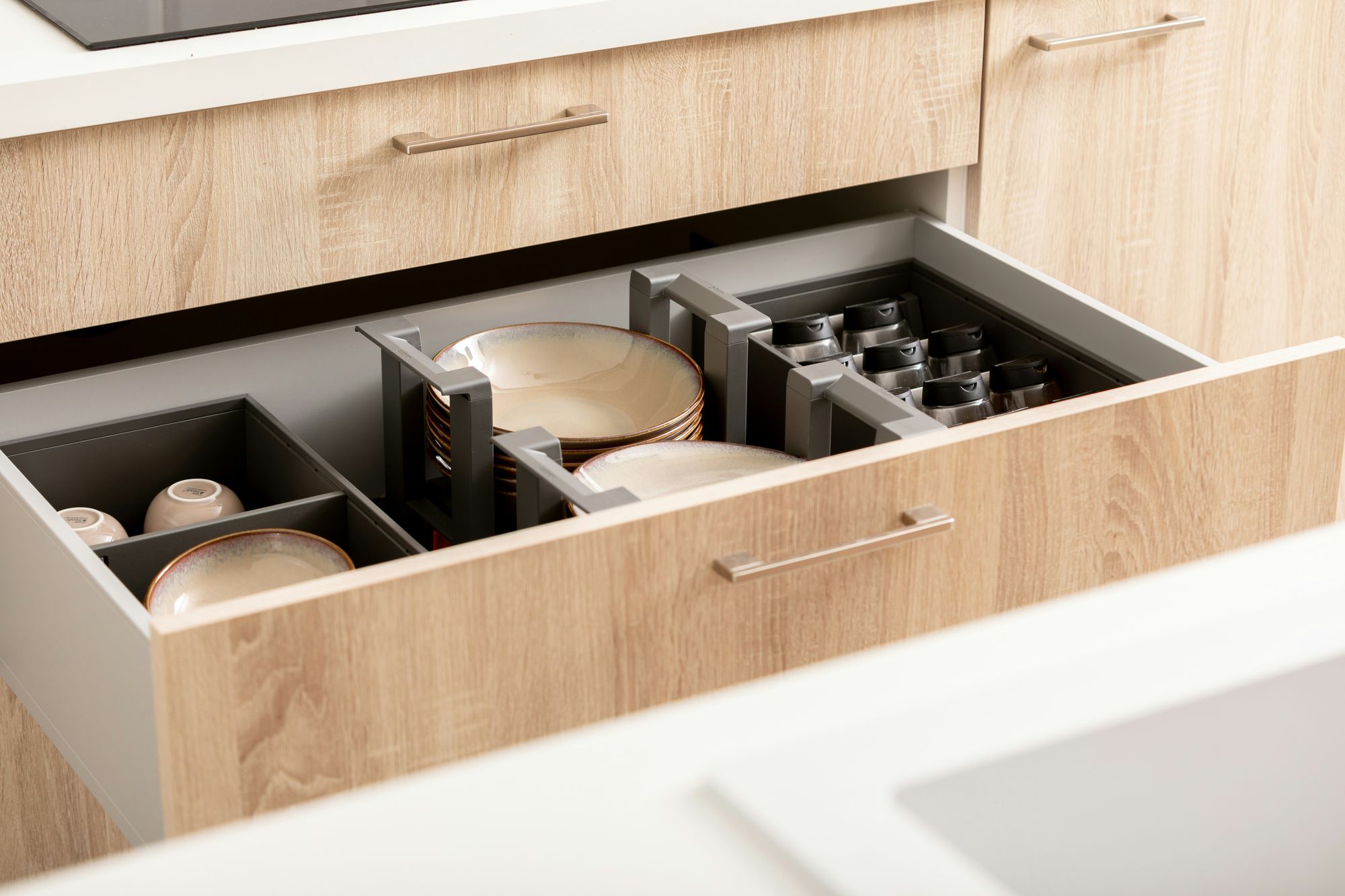
Certainly! Drawer organizers are practical tools designed to help efficiently arrange and separate items within drawers, promoting order and ease of access. They come in various styles, sizes, and materials, catering to specific storage needs in different areas of the home or office. Here are more details about drawer organizers:
Types of Drawer Organizers
Utensil Trays: Specifically crafted for kitchen drawers, utensil trays have compartments of varying sizes to neatly organize and separate flatware, cooking utensils, and kitchen gadgets.
Dividers: Adjustable dividers can be inserted into drawers to create customized sections for different items. They are versatile and can be used in bedroom, kitchen, or office drawers.
Jewelry Trays: Lined with soft materials like velvet or felt, jewelry trays have compartments for organizing rings, earrings, bracelets, and necklaces. They prevent jewelry from tangling and scratching.
Cosmetic Organizers: Designed for bathroom or vanity drawers, cosmetic organizers have compartments for storing makeup, brushes, and beauty products. Some have adjustable dividers for versatility.
Office Organizers: Tailored for office supplies, these organizers may have compartments for pens, paper clips, notepads, and other stationery items. They help create an orderly workspace.
Sock and Underwear Organizers: These organizers often have small compartments for neatly arranging socks, underwear, or ties in bedroom drawers.
Cutlery Trays: Similar to utensil trays, cutlery trays are designed for kitchen drawers to organize and separate knives, forks, spoons, and other cutlery items.
Tool Organizers: Sturdy and often made of durable materials like plastic or metal, tool organizers are designed for workshop or garage drawers to keep tools and small hardware items in order.
Materials
Plastic: Lightweight and affordable, plastic organizers are versatile and come in various colors and designs. They are easy to clean and durable.
Bamboo: A sustainable and eco-friendly option, bamboo organizers add a natural and stylish touch. They are often used for kitchen and office drawers.
Metal: Sturdy and durable, metal organizers are suitable for heavier items. They can add an industrial or modern aesthetic to drawers.
Fabric and Canvas: Soft fabric or canvas organizers are often collapsible and used for organizing clothing items, accessories, or other soft goods.
Acrylic: Clear acrylic organizers provide a sleek and modern look. They are commonly used for cosmetic and jewelry storage, allowing visibility of the items inside.
Wood: Wooden organizers add warmth and elegance. They are commonly used for cutlery trays, office organizers, and jewelry trays.
Benefits of Drawer Organizers
Maximize Space: Drawer organizers help maximize the available space by creating designated compartments for different items, preventing clutter.
Easy Access: Items stored in organized drawers are easily accessible. You can quickly find what you need without rummaging through a jumble of items.
Prevent Damage: Soft-lined organizers help prevent scratches and damage to delicate items such as jewelry or utensils.
Efficient Sorting: Drawer organizers allow for efficient sorting and categorization of items, making it easier to maintain order and cleanliness.
Customization: Adjustable dividers and modular organizers offer customization to suit individual needs and preferences.
Enhanced Visibility: Clear or open organizers provide enhanced visibility, allowing you to see the contents of the drawer without having to open it.
Easy Maintenance: Many drawer organizers are easy to clean, contributing to overall drawer hygiene.
Considerations When Choosing Drawer Organizers
Drawer Size: Consider the size of your drawer to ensure that the organizer fits comfortably and allows for efficient use of space.
Item Types: Choose organizers based on the types of items you intend to store. Different organizers are designed for specific purposes, such as utensils, jewelry, or office supplies.
Material and Style: Select a material and style that complements the overall aesthetic of your space. Whether you prefer a sleek modern look or a more natural appearance, there are organizers to suit various styles.
Adjustability: If you anticipate changing the contents of your drawers frequently, opt for organizers with adjustable dividers or modular components.
Durability: Consider the durability of the material, especially if you plan to store heavy items. Sturdy materials like metal or bamboo may be more suitable.
Ease of Cleaning: Choose organizers that are easy to clean, especially in environments like the kitchen or bathroom where hygiene is crucial.
Drawer organizers are practical solutions for maintaining order and making the most of drawer space in various areas of the home. Whether in the kitchen, bedroom, bathroom, or office, the right organizer can enhance efficiency and simplify daily tasks.


